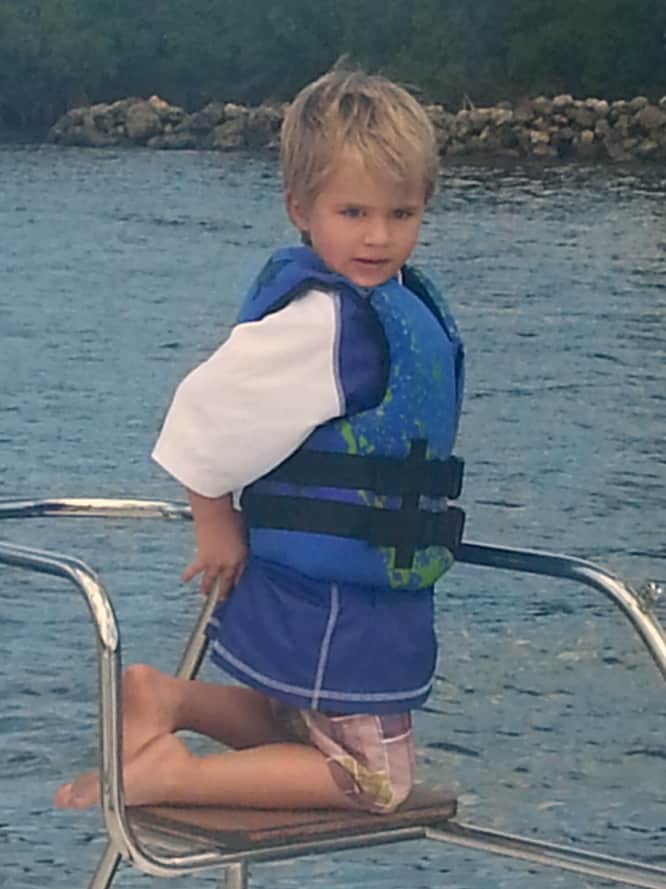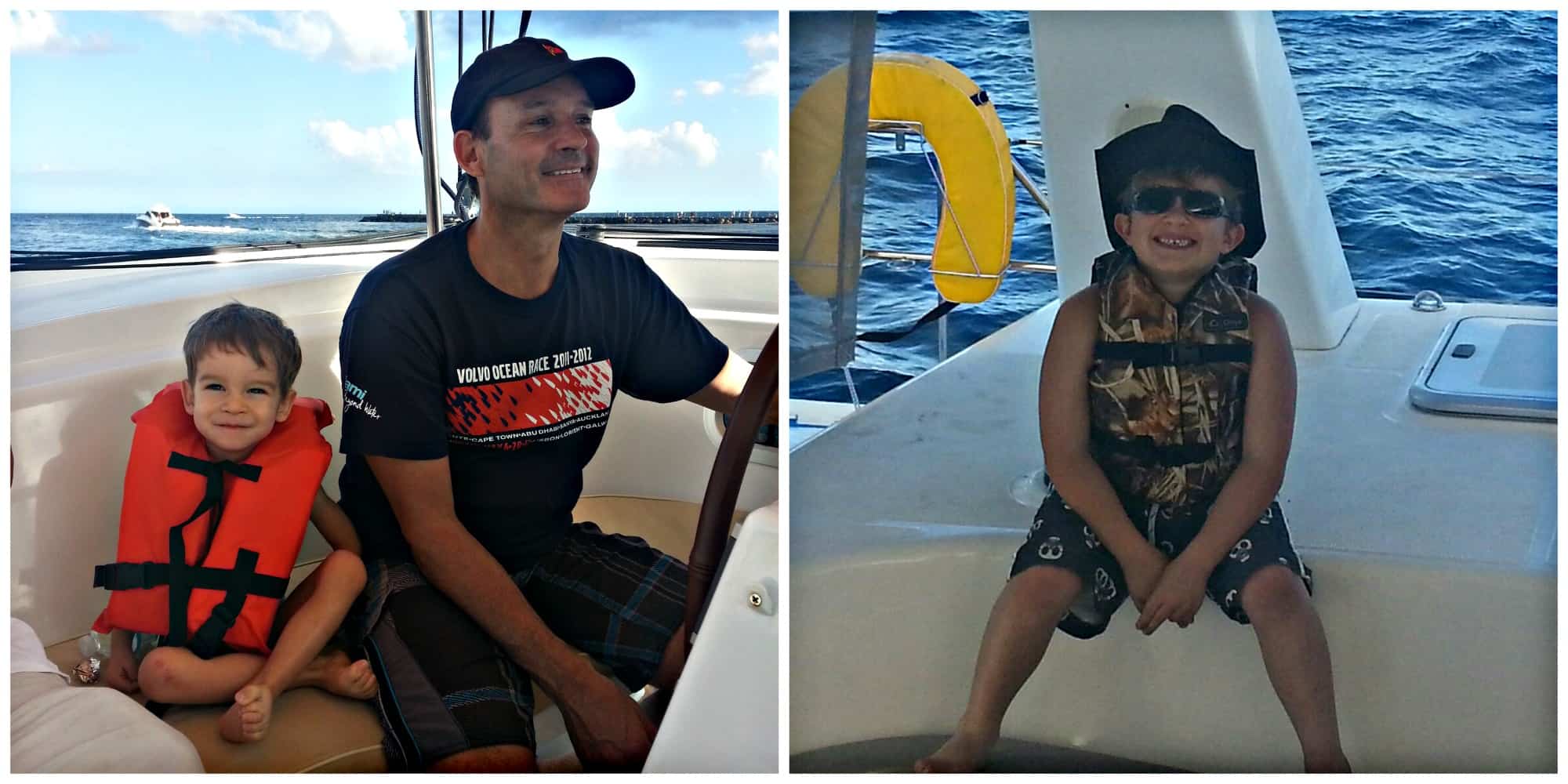Can I, Should I?
 Our yacht owners’ kids are featured in the May issue of All At Sea Magazine. Danny and Jensen enjoy sailing aboard their Fountaine Pajot Salina 48, St Vivien, chartered in the Bahamas, while Max enjoys the ride with his family. The new owners of a Jeanneau 379, Big Sky, chartered in Annapolis, MD. Both catamaran owners are using the Yacht as a Business Program to help pay for their yachts.
Our yacht owners’ kids are featured in the May issue of All At Sea Magazine. Danny and Jensen enjoy sailing aboard their Fountaine Pajot Salina 48, St Vivien, chartered in the Bahamas, while Max enjoys the ride with his family. The new owners of a Jeanneau 379, Big Sky, chartered in Annapolis, MD. Both catamaran owners are using the Yacht as a Business Program to help pay for their yachts.
One of the most frequently asked questions, even from seasoned charterers or charter boat owners, is, “Can I or should I bring the kids on a charter cruise?” Well, my unequivocal answer is a resounding, “YES!” (for any child over 3 years old). But there are many misconceptions about bringing kids along on a charter.
My son first came on our boat when he was 3 1/2. I could tell instantly he would be comfortable and that he would enjoy himself tremendously. He had this wonderful instinct all kids that age have, moving about the right way with a sure foot, properly climbing up and down the companionway, etc. And because he has a curious mind, he immediately started exploring all the corners of the boat. My son has since been on our boat on countless one-week charters and he now, as a young man, really loves and respects sailing and the marine environment.
We thought it would be useful to put together a bit of advice to make kids happy and safe on charter. By the way, we recommend this great site for additional input on these topics: Boatsafe Kids
Successful sailing with kids is simple: give them jobs as crewmembers, explain what you are doing and why, and put them in charge of some things. As they grow up, responsibilities can be increased further building their confidence as sailors and increase fun for everyone. Do not assume kids are too young to participate in crewing your boat. Of course, there are limitations as with everyone like children are not as strong, tall, or able to apply long-term attention to tedious tasks. But, you can give them jobs that are just beyond their abilities and help them discretely so that he will feel proud to be part of the crew. Here are some things Michel Benarrosh, a highly experienced sailor, has experienced with his son over the years.
Chartering with 3- to 6-Year Olds
- Systematically explain everything that goes on aboard from prepping to sailing to docking.
- Point out the name the main parts of the boat and explain their functions.
- Occasionally ask simple questions about what you explained or better yet, have them explain it to someone else.
- In the dinghy, show the child how to steer…obviously, you keep control at all times. Setting the expectation that one day when they handle the dinghy proficiently, they will be named dinghy Captain can really get them focused on building skills!
- Set your child on your lap as you steer the big boat (conditions permitting). Explain what you are doing and watching out for.
- Demonstrate a couple of simple knots and have the child apply them in situations. Create the situations, if necessary.
- For times when there is little to be done or the kids have just had enough for a while, keep several picture books relating to the current environment handy: fish and corals, stars, sailing, and boats.
- Require your child to clean and tidy his or her cabin every morning. This helps the child to understand early on that a tidy boat is a safe boat.
Chartering with 6- to 9-Year Olds
Continue explaining everything that goes on on the boat, as well as the parts and their functions. Only now, you can be more specific and a little more technical. If the child is responding well, you can be even more technical.
Include your child when preparing your navigation for the next day. If he/she asks questions, explain.
When underway, use a baby chart like the one given by some charter companies to show the child the navigation path and how what you see on land relates to the chart.
- Have the child steer the big boat with you. Explain the effects of the wind in the sails.
- Explain the compass and the wind direction indicator.
- Keep him/her busy with flag etiquette.
- Put him/her in charge of something. For example, make the child a spotter: ask the child to help keep an eye on boats which could be on collision course. Explain how and why.
- Show him/her how to coil as well as to do some more complicated knots. The bowline with the rabbit in and out of the hole is a winner. Make the child use the knots he/she knows. My son was doing a perfect monkey fist at 7.
- Ask the child to help cranking the small winches or tailing/coiling some small lines. If he can’t do it, help discreetly. If several crews are cranking hard or pulling sheets, invite the child participate.
- In the dinghy, your child should be able to steer by himself (with you on board -of course! – and keeping one hand on the tiller just in case.) He is now the official Dinghy Captain. Get him/her the T-shirt.
- Put him/her in charge of making sure younger children wear their life jackets. Of course, supervise this discreetly.
- A great book to buy for tons of kid activities while sailing is “Fun Afloat”

Safety Considerations and Other Topics
- Physical safety is the main priority when kids are on a sailboat. I personally have 3 simple rules on my boat:
- all children under 12 must wear a life jacket when on deck (I strongly suggest investing in a real, properly fitting life jacket, with a solid, easily caught grab-handle. For extra safety, a harness is also a good idea. But remember: none of these devices, however good they are, can be a substitute for parent supervision.)
- no child goes on the foredeck when sailing
- if the weather gets really too rough, kids go down below.
- Take time to inspire a good amount of respect for the water, the wind, and the elements. Explain how these forces can bring a great deal of difficulty in no time. Do not scare children, but remind them that falling into the water from a boat is not the same as falling into a pool. The water may be colder or deeper. Some children understand this instinctively while others need to be reminded.
- Give the kids time to explore the boat while at the dock and start using boat terms such as head, galley, boom and cockpit. Show them where the hand grips and handrails are. Teach them the sentence: One hand for you, one hand for the boat. Have them practice moving around the boat while wearing their PFD. Show them how to use the head.
- When you are having fun on the boat, it will be contagious and children will have fun too. So avoid screaming or children will always associate boating with screaming. The same goes for panicking, or being grumpy. So if you stay calm, fun and enthusiastic, it will reflect on them.
- Let them be children. Do not make being on a charter cruise synonym of constant work. Let them do whatever they want, play down below etc. That is, if you want them to come back when they grow up!
- Keep the first day sail short. A 4-hour sail might be short for you, but not for a child. And make sure to have plenty of snacks and water to keep children happily fed and hydrated.
Of course, you can make your own rules and experiment much more than what I described. But following those few guidelines will build a foundation for many happy charters and the fabulous reward of seeing happy little sailors.





